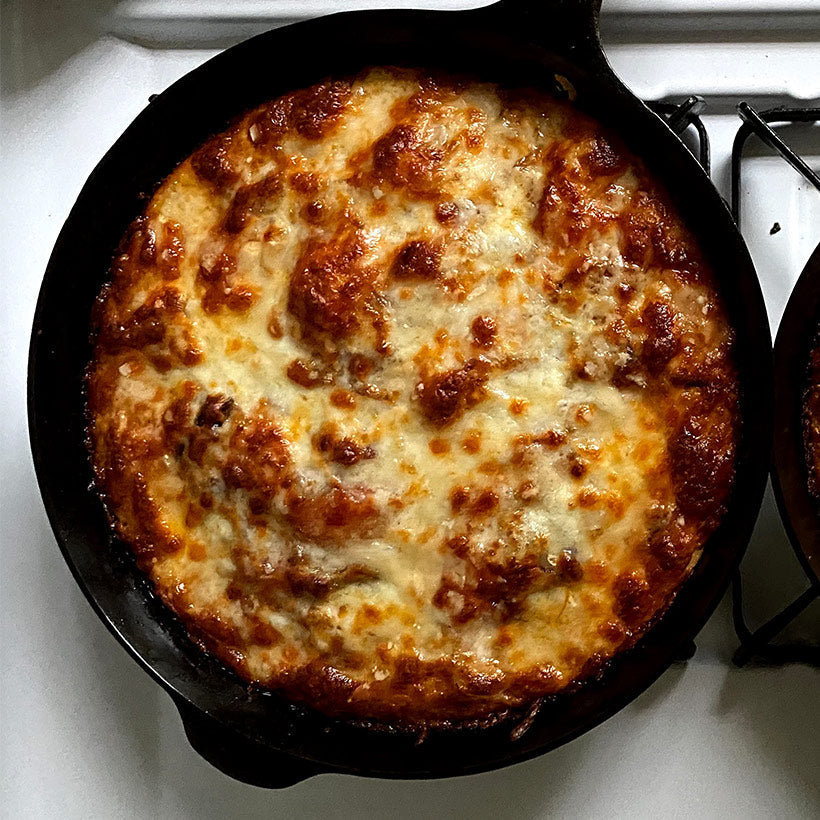Quick, energizing, and healthy, cast iron shrimp makes an ideal weeknight dinner, especially when you’re short on time. Your skillet is the ultimate sidekick, perfectly searing those shrimp while keeping them crisp and juicy. Read on four our easy, lemony garlic shrimp recipe and our best tips for cooking shrimp in cast iron.
Benefits of eating shrimp
Rich in nutrients, antioxidants, and high in protein, the health benefits of eating shrimp are numerous. Below, we walk you through some of the major benefits of eating shrimp. It’s important to note the best way to ensure you’re receiving optimal health benefits from eating shrimp is by purchasing fresh, high quality, wild-caught shrimp.
Shrimp are low in calories and high in protein
Combining lots of protein (18 grams)* and a low caloric content (84)*, shrimp is a great option for those looking to maintain healthy body fat and/or build muscle.
Shrimp’s calorie content is much lower than other foods. A 3-ounce serving of grilled chicken breast, for example, contains 125 calories—almost 1.5 times more per serving than shrimp. Plus, 90 percent of the calories in shrimp come from protein.
Protein is essential for growing and maintaining muscles and organs. Increasing protein intake has been found to increase lean muscle mass, reduce blood pressure, and fight diabetes.
Shrimp contain antioxidants
Astaxanthin is an antioxidant found in shrimp thanks to the algae they consume. Astaxanthin’s many benefits include preventing inflammation caused by free radicals, and promoting heart health by increasing HDL (aka good) cholesterol levels and strengthening arteries.
Shrimp contain Omega-3s
The omega-3 fatty acids found in shrimp support heart health by reducing triglycerides and lowering blood pressure in those with high blood pressure.
Some studies have found omega-3 intake is also linked to fighting autoimmune diseases and age-related mental decline, including Alzheimer’s disease.
Shrimp are nutrient-rich
Shrimp are quite literally brimming with nutrients, more than 20 vitamins and minerals are found in each serving.
Among the many health-promoting nutrients found in shrimp are the following:




